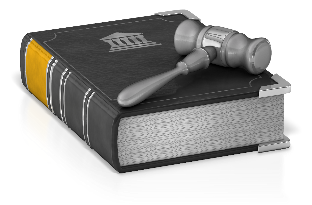
Special Actions Policies
Filing and Service
Under Administrative Order 2023-06, when a petition for special action is filed electronically, the petitioner must serve all respondents and real parties in interest electronically, either through the judicial branch e-filing system or by email on the same day as the petition is filed. Likewise, any response or reply filed electronically must be served electronically, either through the judicial branch e-filing system or by email the same day as filing. In addition, any party filing a petition for special action must file a contact information sheet including a separate list of each party to the special action (including each respondent and each real party in interest), each counsel, and each counsel's email address (or a mailing address if the email address is unavailable), and each telephone number.
Special action documents may not be processed by the Clerk of the Court if they do not comply with the rules or if they are submitted without the required filing fee.
Cross-Petitions
Under A.O. 2023-06, no cross-petitions may be filed in Special Actions in Division One. The respondent must file a separate Special Action to raise any question allowed by Rule 3, Arizona Rules of Procedure for Special Actions.
Timing
Any response to a petition for special action must be filed in writing within seven business days after service of the petition on the respondent. Any reply to the response must be filed by 1:00 p.m. on the day it is due. ("Business days" do not include Saturdays, Sundays, and legal holidays. If the last day of the period falls on a Saturday, Sunday, or legal holiday, the filing deadline is the next business day.)
If the judges reviewing the petition determine that oral argument is needed, the Court will issue an order identifying the date and time of oral argument.
Stay Requests
The Court generally will not consider granting a stay of a matter in the superior court unless the superior court already has denied a stay request. For that reason, a party should not request a stay in the Court before first asking for a stay in the superior court.
To obtain a hearing before the Court on a motion for stay, each petitioner and respondent must follow the process outlined below.
Petitioner:
Petitioner’s counsel, (or petitioner if petitioner is not represented by counsel) must file a motion with the Court of Appeals requesting the stay.
- All times between the hours of 8:00 a.m. and 5:00 p.m. during the next two business days that when petitioner’s counsel (or petitioner if petitioner is not represented by counsel) is NOT available for a stay hearing, with an explanation for the unavailability.
- The phone number and email address at which petitioner’s counsel (or petitioner if petitioner is not represented by counsel) can be reached.
- A statement affirming that petitioner requested a stay in the Superior Court.
- A statement confirming whether the Superior Court has granted, denied, or not yet ruled on the stay request.
Petitioner’s counsel (or petitioner if petitioner is not represented by counsel) must copy respondent or respondent’s counsel on the email.
Respondent
Respondent’s counsel (or respondent if respondent is not represented by counsel) must respond to the petitioner’s email with information regarding all times between the hours of 8:00 a.m. and 5:00 p.m. during the next two business days when respondent’s counsel (or respondent if respondent is not represented by counsel) is NOT available for a stay hearing, with an explanation for the unavailability.
Once the Court receives the above, the Court will then issue a separate notice setting the date and time for the stay hearing.
Appendices
A copy of the decision from which the petition for special action is being taken must be attached to the petition. In addition, all references to the record must be supported by an appendix of documents in the record before the superior court that are necessary for a determination of the issues raised by the petition. The Court will not accept links to documents stored elsewhere. The relevant documents must be attached. If feasible, the Court asks filers to file a combined petition and appendices (or response and appendices), with the cover page of the appendices numbered sequentially to the last page of the petition or response. The appendices should have a table of contents and, if filed electronically, the table of contents should be bookmarked to items in the appendices. If feasible, when the appendices are combined with the petition or response, the petition or response should contain bookmarks or hyperlinks to items in the appendices whenever these items are cited in the petition/response. In all cases, references to the record in the petition or response should be to the page number of the appendices.
Related Cases
Parties must file a separate “Notice of Related Cases in Special Action” if they are aware of any related pending or prior proceedings. A standard form for that purpose can be found here.
Screening
The panel assigned to decide a special action will screen the petition upon its filing. If the panel determines that a petition is not appropriate for special action review, the panel will issue an order summarily declining to accept jurisdiction of the petition without awaiting a response.